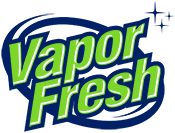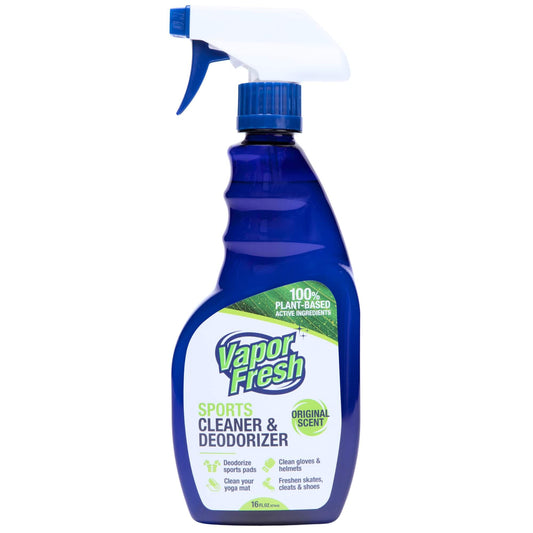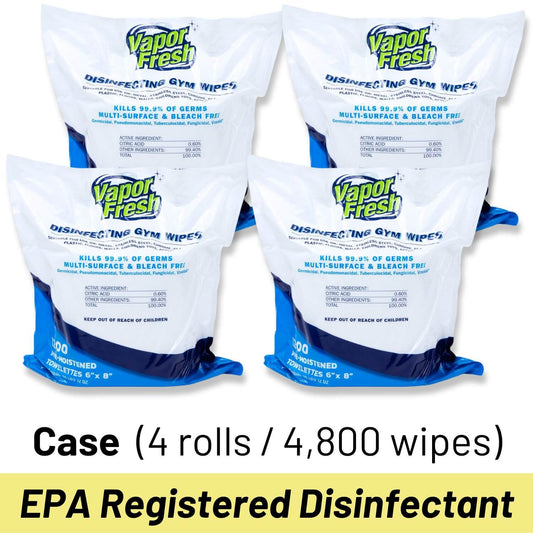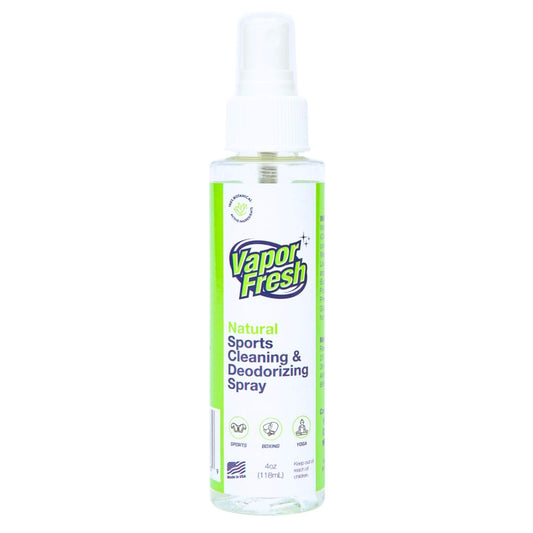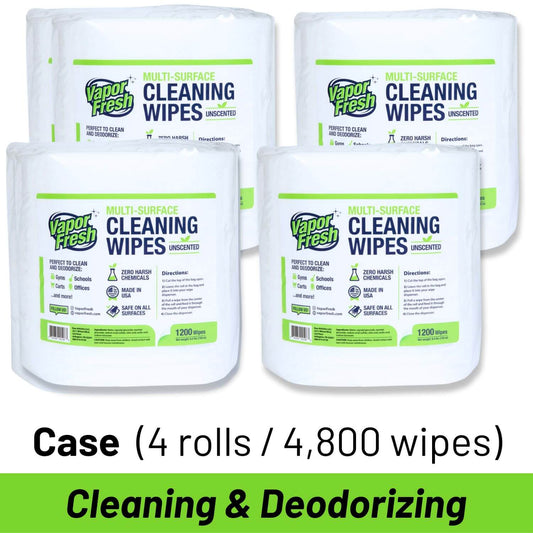We go to our favorite gyms and spin studios for one reason-- to get healthier. So what would you say if I told you that you may be putting yourself at an increased risk for developing asthma and other lung sensitivities by just being at the gym? Think it’s some scare-tactic worthy of a buzzfeed title? Think again.
All established and well-maintained gyms use gym wipes to keep their space clean and sanitary, especially since we all know people are much more willing to use a gym wipe than a cleaning spray to clean their equipment after use. And when most people clean their equipment after use, they think they are doing themselves and everyone around them a favor, but in reality they probably just put themselves and everyone around them in harm’s way.
You see, most gym wipes use one of three classes of chemicals, all of which have serious health and environmental consequences. These three classes of chemicals are quaternary ammonium compounds, phenols and bleaches. Not only are Vapor Fresh® Disinfecting Gym Wipes the most cost-effective wipe on the market, they're also completely free of these three classes of chemicals--
GYM WIPES WITH QUATERNARY AMMONIUM COMPOUNDS
Nearly all gym wipes on the market get their disinfecting properties from any number of quaternary ammonium compounds. This should scare the heck out of everyone for a number of reasons.
Asthma risks of quaternary ammonium compounds
First of all, studies of quaternary ammonium compounds have suggested over and over again that they cause new cases of asthma and other lung sensitivities. I’ll repeat that-- they can cause new cases of asthma in people previously unaffected by the disease (source, source, source). The science is so alarming that there’s actually a movement in California to have quaternary ammonium compounds, phenols and bleaches eliminated from all schools and childcare facilities.
Quaternary ammonium compounds can be less effective
As if that’s not enough to avoid them, there’s more-- quaternary ammonium compounds are not even that effective at disinfecting surfaces unless at really high concentrations, which, well, sort of makes the first point much worse. The leading gym wipe, which uses quaternary ammonium compounds as its active ingredient, has a kill-time of 10-minutes. That means that the surface needs to stay visibly wet for ten entire minutes in order to achieve a disinfection rate of 99.9%. This is clearly unrealistic in practice since the surface will dry up well before that ten minute mark. That would mean that you need to wait until the surface is drying up, and then wipe it down again, and continue that process until it’s been wet for ten minutes. Let’s be honest-- ain’t nobody got time for that. Using gym wipes with a 10-minute kill time essentially guarantees that your gym is not sanitary unless many other precautions are taken.
Environmental risks of quaternary ammonium compounds
Still not done-- quaternary ammonium compounds are no friend of the environment either. They do not degrade very well, so when they are discarded, they usually find their way to our water sources. Because they are so toxic to aquatic life, they pose serious ecological threats as well.
Active Ingredient names for quaternary ammonium compounds
You can identify products that use quaternary ammonium compounds by seeing if the following is listed as an active ingredient on the label:
Benzalkonium chloride
Octyl decyl dimethyl ammonium chloride
Dioctyl dimethyl ammonium chloride
Didecyl dimethyl ammonium chloride
Alkyl dimethyl benzyl ammonium chloride
Alkyl dimethyl Ethylbenzyl ammonium chloride
Why are people still using wipes with quaternary ammonium compounds again?
GYM WIPES WITH PHENOLS
If you thought the negatives of using gym wipes with quaternary ammonium compounds were bad, buckle up, because phenols take it to another level. For instance, in California, if a gym uses phenol-based wipes, they must make a clear and reasonable attempt to notify their clients and staff of the suspected cancer, birth defects and reproductive risks associated to being exposed to phenols, and can be fined up to $2,500 for each roll that is not marked properly. Specifically--
Phenol is a known carcinogen
Phenols are known to the State of California to cause cancer, and require a warning label in order to be sold anywhere in the state. There are a number of large scale studies to back up this policy, most of which can be summarized in the EPA’s Review of Phenols in 2002, where they discuss phenol’s ability to be absorbed in the skin and the potential health consequences.
Phenol can be less effective
Given the potential health risks of being exposed to phenols, they surely must be very effective at disinfecting surfaces, right? Wrong. Most gym wipes that contain phenols have a kill-time of 10-minutes, meaning that once you use the wipe, the surface you just cleaned needs to stay visibly wet for ten whole minutes in order to achieve a 99.9% disinfecting rate. That’s clearly unrealistic.
Phenol is absorbed rapidly through the skin
Phenol has a high dermal absorption rate, which means it is rapidly absorbed through the skin, where it is then widely distributed throughout the body, although it reaches its highest concentrations in the lungs, liver and kidneys. Just by grabbing a wipe, you are exposing your entire body to phenols.
Active Ingredient names for phenols
You can identify products that use phenols by seeing if the following is listed as an active ingredient on the label:
o-phenylphenol
o-benzyl-p-chlorophenol
Phenol-based wipes are hazardous to human health and not even that effective-- why are people using them again?
GYM WIPES WITH BLEACH
Everyone knows what bleach is and has used it in the past. But it is an extremely harsh and corrosive chemical that needs to be treated with extreme caution and not necessarily something you want to come in constant contact with at the gym.
Bleach has skin and eye risks
All bleach products needs to state on their label, “DANGER: CORROSIVE. Causes irreversible eye damage and skin burns” because, well, it causes irreversible eye damage and skin burns. If you use a bleach gym wipe and then feel the need to wipe some sweat away from your face during a tough workout, do so with caution.
Bleach can damage gym equipment
Bleach is very corrosive and poses a threat to damaging gym equipment. Aside from the obvious aesthetic consequences, there are also safety consequences. For instance, there have been reports that chlorine bleach could significantly weaken the strength of nylon in climbing gear harnesses.
Active Ingredient names for bleach
You can identify products that use bleach by seeing if the following is listed as an active ingredient on the label:
sodium hypochlorite
Bleach is certainly useful in certain situations, but are they a good, safe option for gym wipes? Probably not.
IF YOU WANT COST-EFFECTIVE, SAFE AND ECOFRIENDLY GYM WIPES, AVOID THESE CHEMICALS ABOVE AND CHOOSE VAPOR FRESH® DISINFECTING GYM WIPES
